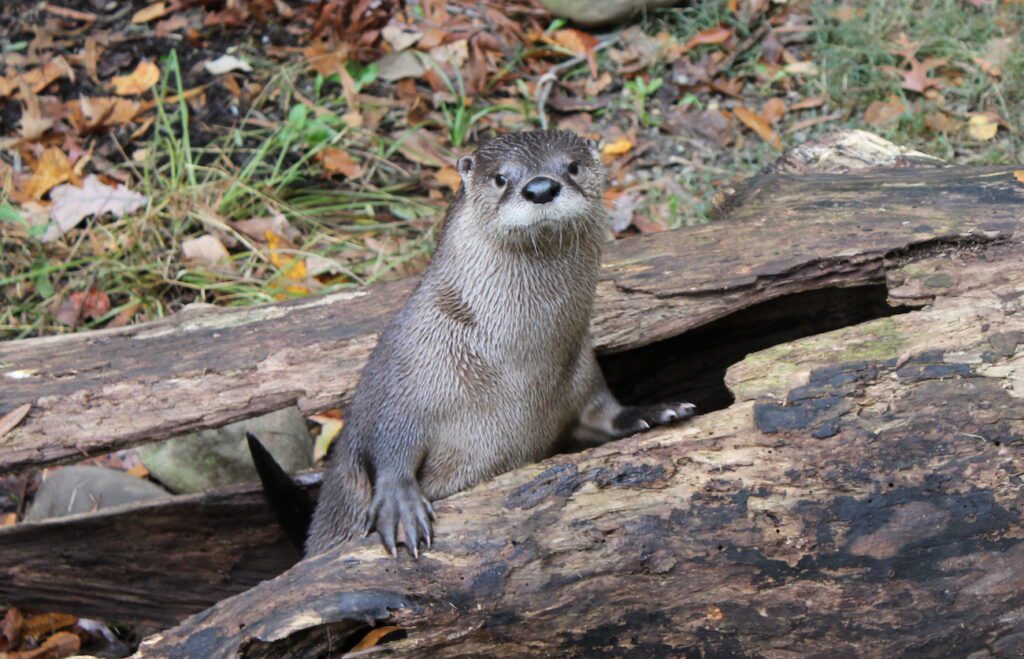March 25, 2020
In January, County Executive Adam Bello appointed David Hamilton, who has served as the Zoo’s General Curator for 15 years, to be Interim Zoo Director. David has worked in animal care for over 26 years. For 20 of those years, he has also served as the North American River Otter Species Survival Plan Program Leader and Studbook Keeper for the Association of Zoos and Aquariums (AZA). We sat down with him to understand more about his work with the Species Survival Plan (SSP).
Q: What is the Species Survival Plan?
A: It is a coordinated initiative to plan for and manage breeding of animals across all AZA-accredited zoos and aquariums to ensure genetic diversity and species sustainability in human care. Think of it as mega “Match.com” for endangered animals. There are Species Survival Plans for about 500 different species. They drive animal moves and breeding recommendations across AZA-accredited zoos.
Q: That’s a lot to manage! How exactly does it work?
A: For North American river otters, we create an annual plan. We know every otter at every zoo and aquarium, as well as its lineage. There are currently about 260 animals at 110 facilities. Once a year, we ask all of the zoos and aquariums to let us know what changes they want to make, which include requests for new animals, requests to breed, or sometimes requests to move animals away to other zoos. I work with a population biologist to try to come up with a plan that will work for all involved. There are typically about 25 moves of North American river otters each year and close to 60 recommendations to breed. After fine-tuning, the plan is finalized, and the zoos start planning for the animal moves.
Q: Why are all these moves necessary?
A: Being part of the Species Survival Plan means that we’re all solving for the good of the species. We want to ensure there are enough animals with as much genetic diversity as possible to last for a very long time. For instance, animals die each year; across all zoos we want to ensure there are at least as many births each year as there are deaths. For each species, there is a time when a young animal would naturally leave its parents and start its own family. And sometimes, animals move because they don’t have a mate, or they haven’t reproduced with the mate with which they are matched.
Q: How come some animals are approved to breed and others aren’t?
A: It’s driven by a few factors. First, whether the institution has the space and skills to care for offspring. Additionally, how offspring would fit with the animals in the collection. And finally, whether the genetics of the two animals are suitable for mating.
Q: What animal moves do you anticipate here at Seneca Park Zoo?
A: We have made requests to receive animals in situations where there have been deaths. For instance, we’ve asked for a female North American river otter to be a mate to Sailor, our male. And we’ve asked for a mate for red panda Starlight, since Blaze died last year. We can also anticipate that in time, younger animals born here at the Zoo will move to other zoos to start their own families.
Q: So animals like sea lion Bob and snow leopard Silver will eventually leave to start their own families?
A: Yes, that will be the plan. We try to time it appropriately when they would naturally disperse and leave their mothers. Sometimes they mature more quickly in human care and can move sooner.
Q: What about new animals like the giraffes?
A: Giraffes are unique because they can only be transported when they are young or they become too tall to travel. When Animals of the Savanna opened, the SSP took particular care to make sure we had animals that would be appropriate for breeding when they reach the appropriate ages. Our giraffes have very valuable genetics so we shouldn’t anticipate moves there. Eventual calves (we are hopeful!) would move to other zoos.To stay up-to-date on any animal moves, make sure to follow Seneca Park Zoo on Facebook, Instagram, and Twitter.
Featured image photo credit: Rebecca Sturniolo, Smithsonian’s National Zoo.








